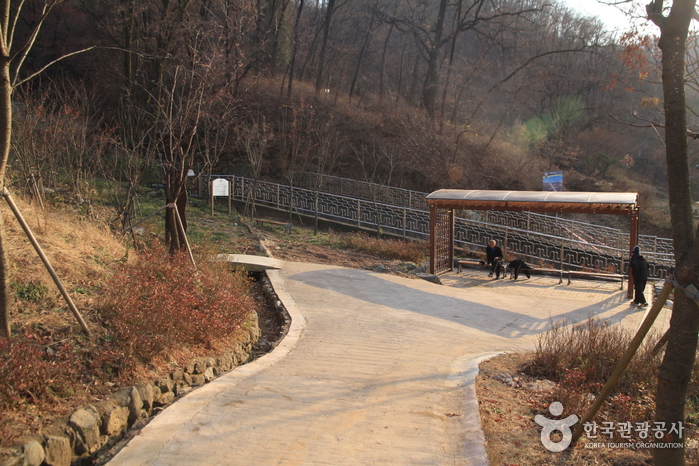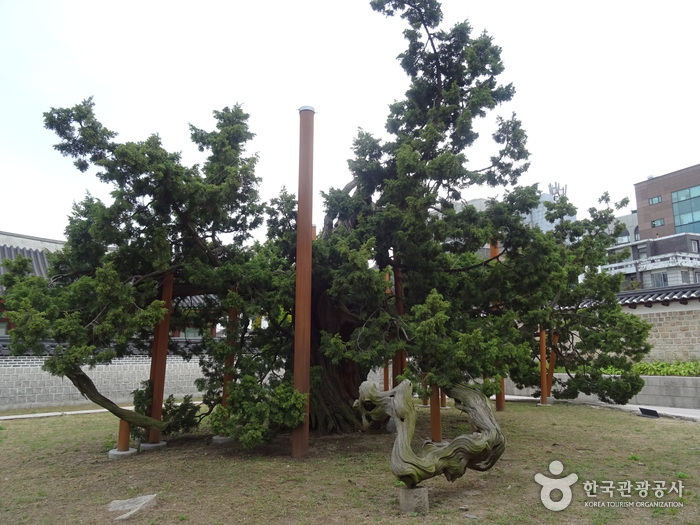Olive Young - Sindang Station Branch [Tax Refund Shop] (올리브영 신당역)
6.5Km 2024-04-18
258, Dasan-ro, Jung-gu, Seoul
-
Seoul Mangusan Mountain (망우산(서울))
6.5Km 2021-02-10
San 69-1, Mangu-dong, Jungnang-gu, Seoul
+82-2-2094-2395
Mangusan Mountain at 281.7 meters above sea level spans across Mangu-dong and Myeonmok-dong of Seoul, and Guri-si of Gyeonggi-do. Located on the mountain is Mangu Cemetery, which was designated as a public cemetery in 1933. Since its designation, many popular people have been buried here including children’s literature author Bang Jeong-hwan (penname: Sopa), independence activists Oh Se-chang and Han Yong-un, and Ji Seok-young who pioneered the use of the smallpox vaccination in Korea and was also a Korean linguist. In addition, tombstones bearing chronological listings of seven popular poets and one educator were installed at the park, making the cemetery a venue for historical education. The park also has Sin Gyeong-jin Sindobi, a cultural asset designated as Seoul Tangible Cultural Property No. 95. It is a monument of Sin Gyeong-jin, an official scholar of the Joseon dynasty.
The park also has a 5.2-kilometer-long circular road named “The Thinking Path”. The name was selected through a public competition held in May 1998. Other facilities include the urban environment and nature observation road, a wooden gazebo, and a mineral spring. Thanks to the well managed trees and clean air, the park is visited by many citizens seeking a place to rest.
Hyangnamu Tree in Changdeokgung Palace (창덕궁 향나무)
6.5Km 2025-01-13
99, Yulgok-ro, Jongno-gu, Seoul
+82-2-3668-2300
Hyangnamu or 'Aromatic Tree' in Changdeokgung Palace is estimated to be about 700 years old, meaning it had likely been planted before the palace was built. It stands 12m in x_height, measures 5.9m in girth around the roots, and has branches spreading in all four directions. It is designated and protected as a National Natural Monument.
Soda - Hyundai Dongdaemun Branch [Tax Refund Shop] (소다 현대동대문점)
6.5Km 2024-04-22
3F, 20, Jangchungdan-ro 13-gil, Jung-gu, Seoul
-
KL - Hyundai Outlets Dongdaemun Branch [Tax Refund Shop] (KL 현대아울렛동대문점)
6.5Km 2024-04-16
3F Hyundai City Outlet Dongdaemun Branch, 20, Jangchungdan-ro 13-gil, Jung-gu, Seoul
-
Zio Songzio - Hyundai Dongdaemun Branch [Tax Refund Shop] (지오송지오 현대동대문)
6.5Km 2024-04-22
6F, 20, Jangchungdan-ro 13-gil, Jung-gu, Seoul
-
The Handsome Mine - Hyundai Dongdaemun Branch [Tax Refund Shop] (한섬 마인 현대동대문)
6.5Km 2024-04-17
Hyundai City Outlet Dongdaemun Branch, 20, Jangchungdan-ro 13-gil, Jung-gu, Seoul
-
Demoo - Hyundai Dongdaemun Branch [Tax Refund Shop] (데무 현대동대문)
6.5Km 2024-04-17
3F, 20, Jangchungdan-ro 13-gil, Jung-gu, Seoul
-
Daehyun Zooc - Hyundai Dongdaemun Branch [Tax Refund Shop] (대현 쥬크 현대동대문)
6.5Km 2024-04-17
Hyundai City Outlet Dongdaemun Branch, 20, Jangchungdan-ro 13-gil, Jung-gu, Seoul
-
![Kum Bak Yeon [Tax Refund Shop] (금박연)](http://tong.visitkorea.or.kr/cms/resource/74/3313974_image2_1.jpg)
![Olive Young - Sindang Station Branch [Tax Refund Shop] (올리브영 신당역)](http://tong.visitkorea.or.kr/cms/resource/35/2878735_image2_1.jpg)


![Soda - Hyundai Dongdaemun Branch [Tax Refund Shop] (소다 현대동대문점)](http://tong.visitkorea.or.kr/cms/resource/96/2887796_image2_1.jpg)
![KL - Hyundai Outlets Dongdaemun Branch [Tax Refund Shop] (KL 현대아울렛동대문점)](http://tong.visitkorea.or.kr/cms/resource/06/2887806_image2_1.jpg)
![Zio Songzio - Hyundai Dongdaemun Branch [Tax Refund Shop] (지오송지오 현대동대문)](http://tong.visitkorea.or.kr/cms/resource/26/2888926_image2_1.jpg)
![The Handsome Mine - Hyundai Dongdaemun Branch [Tax Refund Shop] (한섬 마인 현대동대문)](http://tong.visitkorea.or.kr/cms/resource/55/2888055_image2_1.jpg)
![Demoo - Hyundai Dongdaemun Branch [Tax Refund Shop] (데무 현대동대문)](http://tong.visitkorea.or.kr/cms/resource/75/2888075_image2_1.jpg)
![Daehyun Zooc - Hyundai Dongdaemun Branch [Tax Refund Shop] (대현 쥬크 현대동대문)](http://tong.visitkorea.or.kr/cms/resource/95/2888095_image2_1.jpg)
 English
English
 한국어
한국어 日本語
日本語 中文(简体)
中文(简体) Deutsch
Deutsch Français
Français Español
Español Русский
Русский